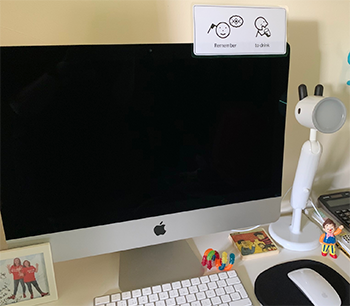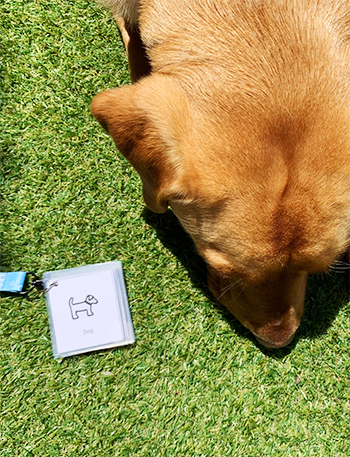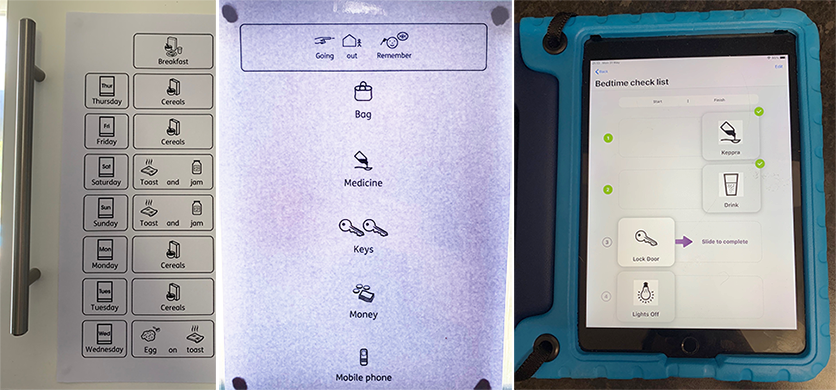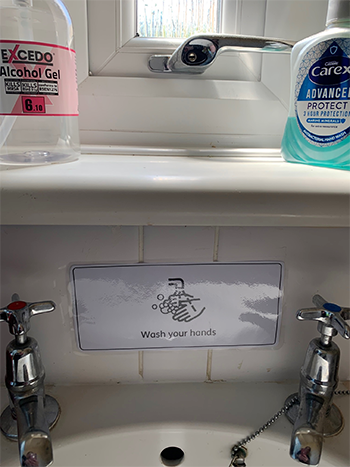 I was born prematurely with a birth defect effecting my ability to learn to talk and I was also diagnosed with autism delaying my speech further. Makaton was my first language and it still is.
I was born prematurely with a birth defect effecting my ability to learn to talk and I was also diagnosed with autism delaying my speech further. Makaton was my first language and it still is.
Before the age of 7 the only way I communicated was through photos, symbols, and signing. I had no verbal voice, but I did have a voice. Often it just went unheard.
Some people struggled to hear me as they were so used to using their ears, and with me they needed to listen with their eyes.
I have many childhood memories around communication from walking round a zoo needing the toilet but every time I tried to drag an adult that way they told me to “wait”, that didn’t end so well for me.
Or an earache with no way to tell anyone apart from to bang my head on the wall in the hope someone would look at it. 24 hours later when I got a runny nose I was taken to the doctors and my ear drum had burst, I had no way to express my pain.
Watching the other kids come home from school and get asked what they did that day, I got asked too but because my voice had no sound with it, other kids would shout and their attention to what I was showing them or signing quickly went, I learnt only those who are loudest get heard. Things like this did not encourage me to try.
 Or I’d try and line up symbols to show what I needed or wanted, not always very accurately, and people would watch, guess once, and then say “have another go, I’ll be back”, yet they never came. I don’t know if it was time or confusion or frustration that they felt, but I know I felt left, given up on at times like that.
Or I’d try and line up symbols to show what I needed or wanted, not always very accurately, and people would watch, guess once, and then say “have another go, I’ll be back”, yet they never came. I don’t know if it was time or confusion or frustration that they felt, but I know I felt left, given up on at times like that.
When I was a kid, people would ask what I wanted for a Christmas or birthday and I would sign “time”: they thought I was asking how long till that birthday or Christmas. I wasn’t, I was asking for their time. I needed extra time to communicate and sometimes I didn’t get that. Sometimes people didn’t even notice I had something to say. And I wanted that time back. I wanted to tell them about something, anything. I just wanted that conversation/connection all the other kids got.
But, when people did learn my way of communicating, or even just tried to give it a go and spent the time with me, they started to call me cheeky and clever rather than not calling me anything. They saw me!
When I learnt to argue and negotiate, I felt amazing. I may not have ever won the “ice cream now, dinner later” debate, but it still felt so good to be able to try!
As I aged, and after a few medical procedures, I was able to start vocalising sounds and words, but I still heavily relied on Makaton. My speech was not clear or consistent, but my Makaton was.
With my Makaton I had confidence, without it I got lost in the world.
Even when my speech progressed to a level where some would say I didn’t need symbols or signs, I really did. Nothing made this more clear than college. I started off so well, passing parts of my course but then I was faced with people telling me I would do better in the “real world” if I stopped doing “silly things” with my hands. They would constantly say “use your words”. What they didn’t see was signs and especially symbols helped me plan my day, organise my thoughts. I still needed Makaton. As a result I started to fail and I never finished college.
If I could go back in time and say five things to those who were around me as a kid I would pick the following;
- Listen with your eyes not just your ears.
- Make time. Our communication will take longer, but it’s still important.
- Let me use what helps me, don’t take my communication tools.
- Try, just try and learn my communication method, even just a few bits.
- Don’t give up on me, all that teaches me is to give up on myself.
Today, as an adult in my 30s, whenever someone says “do you want tea or coffee” I feel my little finger extend and my hand make the C shape: it helps me choose. I don’t drink either, but I still need those feelings and movements in my hands to vocalise that.
My home has symbol check lists for things I may forget. Reminders. Planners and random symbols of the important words or things I might need – like medication, toilet and cider!

I have epilepsy and after a seizure, or when I am anxious or even excited, any strong emotion really, my voice doesn’t do so well on its own, but my Makaton shines. When I let it. So, it is still a massive part of my life and I love it. I just wish others loved it, embraced it, or even tried it: my life would be easier if they did.
Don’t get me wrong, some people do, my friends especially, but out in the community after a seizure, for example, I still feel like I’m in a world where I can’t ask for help or say I am OK, because people wouldn’t understand. It’s not just an anxiety, it’s a fact. I once got approached by the police as someone believed I was on drugs or under the influence of alcohol as I was uncoordinated and couldn’t speak properly. I tried signing as I had no symbols with me, but I was told to lower my hands. It was scary. Of course they apologised once they knew the truth but that didn’t stop me feeling like I’d failed, or feeling scared or frustrated. I don’t like going out on my own as much as I should, even now I avoid it when I can. Awareness is better these days, I shouldn’t have the worries I do, but history stays with us for a while.
When I was an adult, I started working in adult social care, a voluntary work placement to gain living and work skills. I saw adults given drinks, not offered them. I saw adults be given their clothes in the morning with no choice. I saw a menu only staff had input in, and I asked why? I was met with blank faces or people telling me “they can’t chose”. Every day they would wait for breakfast when physically they could have been involved. I didn’t like it. I held bottles of drink for them and let them touch or look or point, I had that time, being a volunteer. And they did! They looked, they pointed, they touched and smiled. They had an opinion.
I remembered all those memories from being a kid and overlooked so strongly. I needed to be part of the solution because unlike those carers, I knew what it was like to not have a voice, and I didn’t want to just sit and watch that go on.
 From that day I wanted to work in adult social care so people, individuals, could have a voice, an opinion and a choice.
From that day I wanted to work in adult social care so people, individuals, could have a voice, an opinion and a choice.
I went to work for another company and I was put on Makaton training. I sat, I watched, I knew the signs (all be it a bit sloppy and a few bad habits), but I sat there and thought to myself “this is what I want to do. It’s why I’m here. This is my purpose.”
I asked the tutor how I could do this, she explained. Years passed, geography and my own epilepsy meant I couldn’t do it, but then lockdown came and I could! I could try and reach my dream.
I redid all my courses, and I applied. I got in.
I worked so hard each and every day. There was language I didn’t understand because I never learnt it at school, so I worked my way through GCSE revision books learning about pronouns, verbs etc late into the night.
And I got my dream! I am now a Makaton Tutor! I cried for pretty much a whole day when I found out I had passed! I was, and still am a Makaton user but now I am also a Makaton Tutor!
I still can’t quite believe it. For over 30 years, Makaton has been a huge part of my life, and at times I have hidden my need for it because of others. But now, now I can use it to help others.
I want to raise awareness. I want to tell people Makaton saved me, no honestly it did. I could ask for help when I needed it, when I really needed it and having a voice of any kind is the best gift you can give someone. I was lucky and now if I can be part of the solution and help others, that is what I want to do. Everyone deserves a voice and deserves to be heard.
It’s only because of the awesome people around me that I have had the confidence to share my story. A big thank you to “H” for always being there and never giving up. And to “N” for supporting me and for giving me that confidence and push I needed, to both of them for always telling me, I am fine just the way I am.